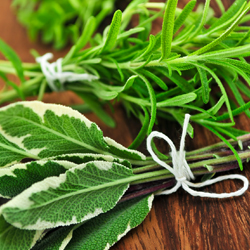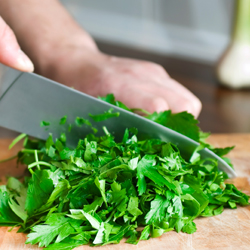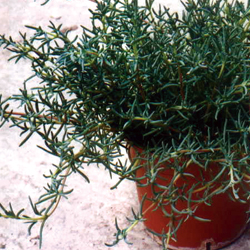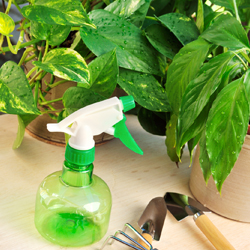Easy-to-Grow Indoor Herbs
for Winter

Even though it may be miserable weather outside, don’t be stuck having to buy overpriced fresh herbs at the store or using dried. Why not grow your own inside the house? Most common herbs will grow quite happily in a sunny window. Your kitchen may be the perfect spot. After all, it's probably warm and sunny there. Moreover, think how great it would be to just reach over to your indoor herb garden, take a few snips of this and that, and serve "garden fresh" tasting foods to your family and guests.

Wondering what herbs will do best indoors? Here is a list of the most popular and easily grown herbs for your kitchen garden:
| Basil Oregano Chives Parsley Lemon Balm |
Rosemary Marjoram Sage Mint Thyme |
Don't overlook edible flowers! Pansies, marigolds and nasturtiums grow well inside the house when given sufficient light and add whimsical color and texture to salads and other meals.
Growing herbs is no different than growing most houseplants. Luckily, herbs aren't as fussy as many other plants. Here are some general tips to get you started:
Light
Brighter is better. South, southwest, or western facing windows should provide a minimum of four hours of sunlight. If none of your windows provides this, come on to see our indoor grow lights. Some hang and others are freestanding. We can inexpensively provide an "indoor sun" set-up for your herb garden.
Soil
Herbs do not require rich soil nor will they do well in heavy soil. Be sure to use a prepackaged potting mix instead of outdoor garden soil. Special herb mixtures provide the perfect balance of drainage, water retention and fertility for growing herbs.
Fertilizing
Plan to fertilize more frequently than you would if they were growing outdoors. Fertilize every other week with a weak solution of liquid fertilizer.

Watering and Pot Selection
Herbs require water. Because some herbs prefer more water than others, it is best to plant into separate pots. When choosing a pot, remember a smaller pot will dry out sooner than a larger pot and will require more frequent watering. Clay pots dry more quickly than plastic or ceramic. It’s a good idea to give your herbs a quick monthly "rain" shower under the faucet to wash off house oils and dust.
Drainage
Herbs don't like sitting in wet soil. Therefore, choose a pot with a drainage hole at the bottom. Be sure to use a saucer or pan to catch the draining water and prevent damage to your windowsill or table.
Harvesting
Snip and use the older leaves to encourage plant growth. Keeping the plant smaller and bushier discourages flowering that changes the taste. Although the plants will be smaller and less lush than those grown outside, their flavor and convenience will make you forget about the weather outside!
When spring returns, you may find yourself addicted to growing your herbs in pots. After all, pots contain "unruly" herbs such as mint, can be decoratively arranged on your deck or balcony, and continue providing delicious and healthful benefits in your cooking for many months. Bon appétit!















